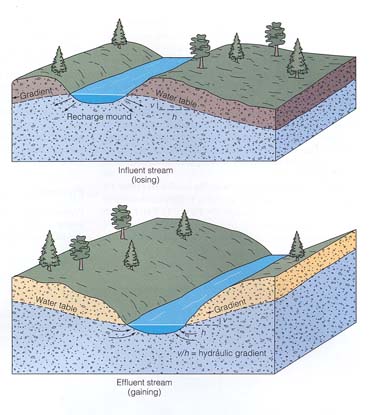| GROUNDWATER |
|
| In most areas of the
Eastern United States, groundwater occupies the pore spaces
between soil particles at some depth below the surface. These deposits can be
fairly small, or enormous underground reservoirs, or aquifers. Near streams and wetlands, the
watertable is usually very close to the surface. Streams and the watertable have a
cooperative relationship. After a rain when the rivers are full, they recharge the
underground water supply. When the streams run dry in the summer, the groundwater
feeds the stream to support the aquatic environment that
lives there.
When groundwater is extracted for residential, commercial, and industrial uses the watertable can be altered. This means the water resides further from the surface than it once did. If more and more water is taken out, eventually the groundwater supply may be exhausted. Under natural conditions, precipitation would percolate through the soil and continually recharge the groundwater. However, in cities, the precipitation is usually piped away as runoff and released in a different area, or so quickly that it cannot seep back into the ground. |
* Pipkin, Geology and the Environment. p 250.
|
|
REFERENCES
|
